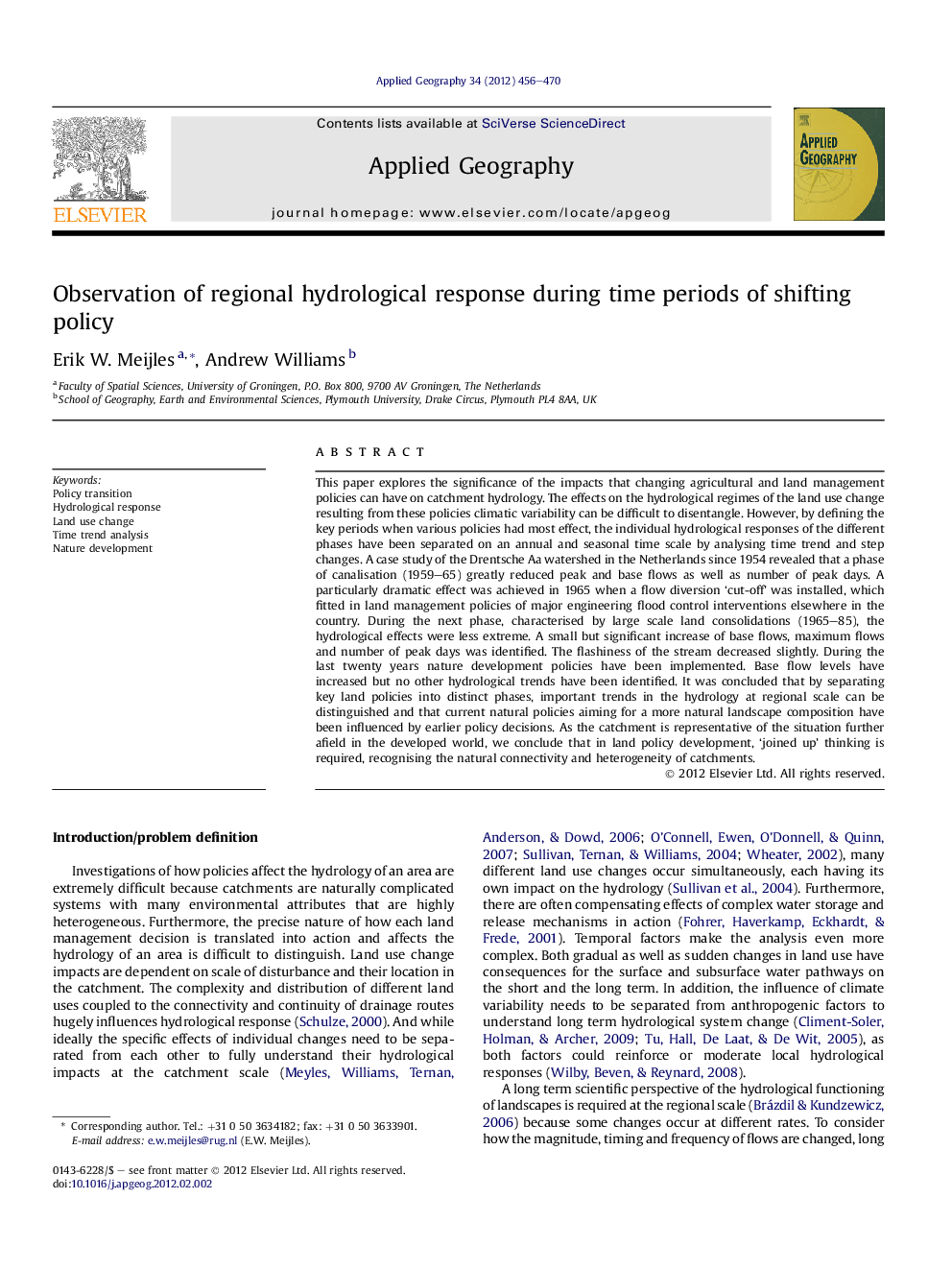| کد مقاله | کد نشریه | سال انتشار | مقاله انگلیسی | نسخه تمام متن |
|---|---|---|---|---|
| 83449 | 158721 | 2012 | 15 صفحه PDF | دانلود رایگان |

This paper explores the significance of the impacts that changing agricultural and land management policies can have on catchment hydrology. The effects on the hydrological regimes of the land use change resulting from these policies climatic variability can be difficult to disentangle. However, by defining the key periods when various policies had most effect, the individual hydrological responses of the different phases have been separated on an annual and seasonal time scale by analysing time trend and step changes. A case study of the Drentsche Aa watershed in the Netherlands since 1954 revealed that a phase of canalisation (1959–65) greatly reduced peak and base flows as well as number of peak days. A particularly dramatic effect was achieved in 1965 when a flow diversion ‘cut-off’ was installed, which fitted in land management policies of major engineering flood control interventions elsewhere in the country. During the next phase, characterised by large scale land consolidations (1965–85), the hydrological effects were less extreme. A small but significant increase of base flows, maximum flows and number of peak days was identified. The flashiness of the stream decreased slightly. During the last twenty years nature development policies have been implemented. Base flow levels have increased but no other hydrological trends have been identified. It was concluded that by separating key land policies into distinct phases, important trends in the hydrology at regional scale can be distinguished and that current natural policies aiming for a more natural landscape composition have been influenced by earlier policy decisions. As the catchment is representative of the situation further afield in the developed world, we conclude that in land policy development, ‘joined up’ thinking is required, recognising the natural connectivity and heterogeneity of catchments.
► This study provides insight into how regional land management policyaffects catchment hydrologyvia land use change.
► By separating key land policies into distinct phases, important trends in the hydrology at regional scale can be determined.
► By combining historical geography with hydrological studies policy makers can learn from the past to develop future policies.
► Current policies focusing on nature development have been influenced directly and indirectly by earlier policy decisions.
Journal: Applied Geography - Volume 34, May 2012, Pages 456–470